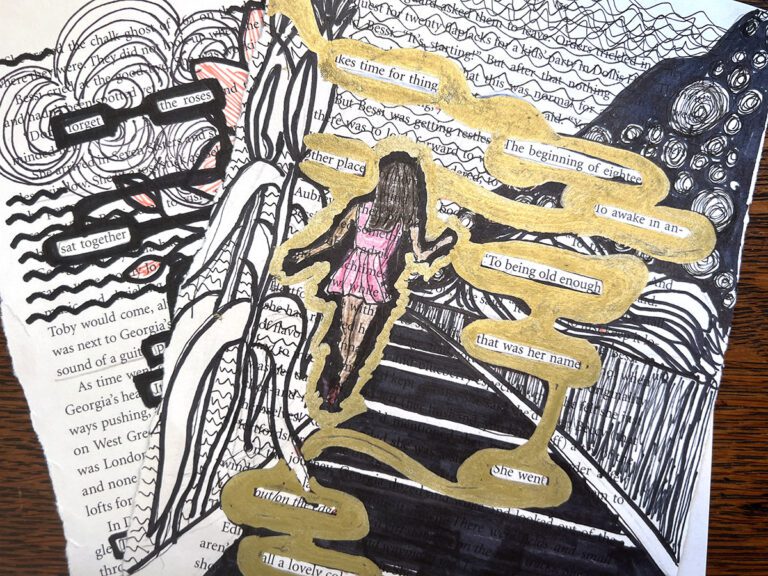Whether it is the elementary classroom or a college art workshop, we want student artists to be able to discuss the merits of an artwork with the appropriate vocabulary. But we all know it takes a loooooooong time to coach students to move beyond, “I like it . . . because it’s cool.” Most of us use anchor charts or classroom displays as a discussion reference for students, but sometimes it’s hard to bridge the gap between a random poster on the wall and a classroom critique.

I’ve learned to streamline classroom discussions with something I call platform slides. Platform slides are a series of slides I create in PowerPoint and use as a template, making art analysis more meaningful for my students. On the edge of each slide, I list the vocabulary I want students to work on, and I leave room on the rest of the slide for an image to investigate.

This strategy works well for a couple of reasons. It provides an immediate and concrete visual for classroom vocabulary, focusing the discussion where I want it to go. Additionally, it is an excellent tool to involve kids who are hesitant or nervous to speak in front of the class because it gives them something specific to say.

Here is an easy step-by-step guide to get you started with your own platform slides.
1. Identify a direction for your classroom discussion.
Think about what you want your students to focus on. Are they looking at elements and principles? Composition? Mood? Technique? Narrative elements? Or a combination of these things? A great discussion about art intermingles all of these concepts, but with younger students, it might be beneficial to start slow, with a singular idea. You know your students best, so plan accordingly.
2. Brainstorm the ideal vocabulary.
With this focus in mind, create a list of the vocabulary you would ideally hope to hear your students use at their level. If you are talking about elements – list them! If you are searching for mood, create a list that includes options beyond just the obvious. Set the bar high, they will rise to it!
3. Create a slide template.
This template is a platform for showing artwork, so it should basically be blank. The vocabulary terms will be the “meat and potatoes” of the slide. Terms can be listed on the side or across the bottom. If you have early elementary kids, consider adding small visuals (like clip art) for non-readers. Whatever format you choose, use it over and over again. If students are used to the format, they will adjust more quickly when you change the content.
4. Cut, paste, and discuss!
Whether you are using images of famous artwork from the web or a series of photos of student work, just cut and paste each image onto a separate slide. Now you are ready to discuss!!

If I want a very focused discussion (diving deep into a certain topic), I require students to use one or two vocabulary words directly from the slide each time they contribute. If things are moving toward a more complex/open-ended discussion on their own, I simply reference the ideas on the platform slide more organically as they come up.
Platform slides help my students contribute to classroom art discussions in a meaningful way. The best part is that you can brainstorm ANY discussion topic you want because this strategy adapts to almost all areas of art. The blank slide above can work as an excellent template to get you started. Best of all, it can be scaled in complexity for any age group. Happy discussing!
What other techniques do you use for teaching art vocabulary?
What do you do to ensure that classroom discussions stay rich and meaningful?
Magazine articles and podcasts are opinions of professional education contributors and do not necessarily represent the position of the Art of Education University (AOEU) or its academic offerings. Contributors use terms in the way they are most often talked about in the scope of their educational experiences.





